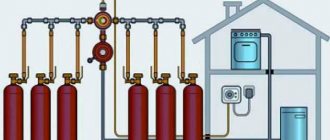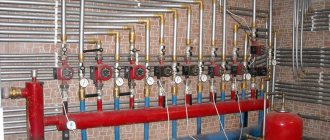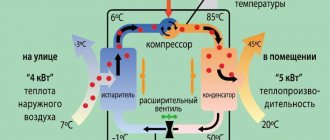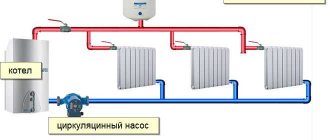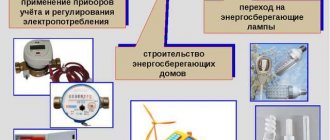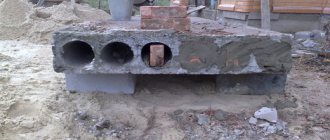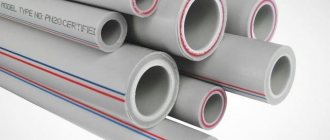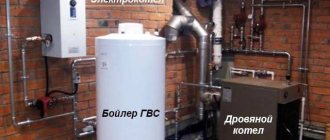Using electric convectors
If, despite the fact that electricity cannot be called the most economical of all types of heating, you still decide to use this option, then convectors that can be installed both on walls and on the floor would be an excellent solution. In the latter case, the device can be moved from room to room, making it mobile. Additional advantages include absolute safety, since the devices are protected against overheating, and their housing does not heat up so much, the temperature does not exceed 80 degrees.
If we take into account that convectors cannot be called the most economical, then it is best to reduce energy bills by purchasing devices with built-in thermostats, which make the system more economical in operation. In terms of functionality, such units are the most innovative, which is associated with the use of an additional control unit. But as for the price, the convector will cost about 3000-7000 rubles. for the heater. If you expect that one device will be needed per room, then the cost of such a heating system will cost approximately 20,000 rubles. Economical electric heating convectors can live up to expectations if the house is small enough, and you approach the choice of device taking into account the presence of a thermostat in it.
Which heating system to choose to provide heat to a private home
Diagram of a two-pipe heating system.
In order to decide which heating system options are suitable for your home, you need to correctly assess all its capabilities and functions that they will perform in the future. If you intend to live in a built house permanently, then the most common option is heating with natural gas. However, this method differs from many others not only in that it is very convenient, but also in the costs required to implement the heating system with everything necessary. Indeed, today, even in those premises in which a gas supply meter is installed, the bills for payment for the relevant services still contain sky-high figures. This is especially true in the autumn-winter period.
And if you turn to the residents of apartment buildings for an example, you can safely say that this service does not yet meet many of the clients’ requirements. Thus, in rooms with central heating, the temperature inside rarely differs from the temperature in unheated entrances. Another traditional option for implementing a home heating plan is to build a stove. It is these units that have served people for many millennia. To this day, in harsh climatic conditions, stoves are indispensable options for insulating a home.
At the moment, despite the large number of fans of traditional heating options, many choose modernized means. These include air, heat guns, and completely new infrared heating systems. and “warm floor” and “baseboard heating” systems and much more. It is quite natural that with such a huge choice, the problem of choice arises. What are the main advantages or disadvantages of this or that design option?
Electric boilers for heating
The boiler of any system is a heat generator; it heats the coolant and supplies it to the circuit. In principle, any heating scheme can work with any type of boiler.
Electric boilers for household heating are considered very convenient, but they require a power supply of sufficient power.
Advantages of installing electric boilers for private homes:
- Simple installation of heating boilers, much easier than gas ones. No separate room is required for installation.
- No chimney or separate room is needed. An electric boiler can be placed in any room.
- Small dimensions and weight, therefore, they are easy to secure.
- Environmental safety, no harmful gases are emitted.
- High efficiency - 95-98%.
Heating system for country houses with liquid coolant
Let’s take a closer look at the most popular type of heating – water. Water heating systems, depending on the fuel used, are divided into the following classes:
- Systems operating on gas (main gas, liquefied gas)
- Electric heating (with electric boilers)
- Solid fuel systems
- Liquid fuel systems
From the standpoint of comfort for living, all the indicated heating options for a country house are approximately the same. Each of them has advantages and disadvantages.
For example, a liquefied gas heating system requires the installation of a gas holder. This entails a high initial investment. At the same time, you will be almost completely independent from external services. True, there are certain requirements for the place to install a gas tank. From time to time it will need to be refilled with gas.
In general, gas heating of a country house itself, options and prices for it have significant variability. To choose the optimal system for your cottage, you can contact our engineers for advice.
Liquid fuel equipment has disadvantages such as noise and odor. If you choose this water heating option for a country house, we recommend locating the boiler room away from the bedroom. It is necessary to provide a place for the location of a container for fuel and access roads for refueling this container.
Heating using solid fuel requires close attention and participation in the process of its operation. Constant loading of the boiler is required. A separate room for a boiler room is required, even in a small cottage, and an expensive chimney. It is necessary to provide a place for storing fuel. We do not recommend placing a solid fuel boiler in living rooms or in the kitchen, as you can turn the cottage into a stoker.
From a comfort standpoint, water heating with electricity in a country house is a convenient option. But when choosing it, you need to be prepared to be completely dependent on local power grids. Possible power outages are a problem. To eliminate this, sources of autonomous power supply are used, for example, autonomous generators, but their price is quite high.
From the point of view of the initial investment, heating with electricity is lower in price than other options. A chimney is not required, and electric boilers are cheaper than boilers designed to operate with other types of fuel.
But quite serious electrical power is required. For example, full heating for a country house with an area of 200 m2 can be organized using 20 kW of electricity. At the same time, the power allocated by the energy company should be greater. The allocated power should be enough to power other electricity consumers in the cottage.
In Russia, the use of main gas has been and remains optimal. Other types of fuel are justified only if the cottage is not gasified. They can be used as backup, in case of gas shortages.
Recently, it has become quite a popular option to supplement the gas heating of a country house with an electric boiler. The power of an electric boiler may be less than necessary to fully heat the building. Its main function is to maintain a slight positive temperature in the cottage in case of problems with gas or gas equipment. This should protect the system from freezing.
Application of bimetallic radiators
If you decide to use gas as an energy source, you can purchase a double-circuit boiler that will become part of the heating system. Among the elements of the latter will be radiators
In order to achieve higher efficiency, it is important to choose the right batteries. The most modern of them are bimetallic radiators, which are characterized by lower cost and high heat output
Aluminum fins are capable of excellent energy transfer; this figure for bimetal is 3 times higher compared to steel batteries. In this case, thermal energy is spent more rationally. You can save not only at the time of purchase, but also in the operation of the equipment, because the high heat transfer of aluminum allows you to use less coolant. The heat flow remains equal to the flow from cast iron radiators. This indicates that bimetallic radiators may be smaller in size, but their shape will be more attractive compared to their cast iron counterparts.
Effective use of solar collectors
To use this technology with high efficiency, you will need to follow some recommendations:
- Solar heating can be used as the main one only in those regions where there are about 20 sunny days per month. Otherwise, you will need to install a backup heating system.
- Collectors should be placed at the maximum accessible height so that as much sunlight as possible falls on them, and their flow is uniform throughout the day.
- Pipes connecting the collectors to the heat exchanger must be insulated to minimize energy losses.
When designing a heating system for a private home, in addition to traditional options, it is advisable to take into account everything innovative and new in heating systems that has appeared recently.
Fan heaters in heating
Fan heater installation diagram: 1 – Stand, 2 – Fan heater, 3 – Screw, 4 – Locking washer.
In addition to heat guns, air heating components include fan heaters. They have much smaller dimensions than heat guns, but the effect of their work is almost the same. This difference becomes very advantageous for using a fan heater in small rooms where it is not necessary to maintain a constant temperature.
Thus, in a private home, this unit is indispensable when the main heating system cannot cope with its direct responsibilities. And if you suddenly wake up in the morning from too cool air, then by turning on the fan heater, you can provide comfortable conditions in a short period of time. Another advantage of the fan heater is that it is used not only as a heater, but it is quite possible to use it throughout the year. In order for you to be able to provide yourself with comfortable living conditions in hot weather, it will be enough to simply turn off the thermal component and enjoy the cool air flows in a private home.
Such units can be either stationary or portable. Therefore, you should not worry about the fact that he will not be able to provide you with the proper conditions in all areas of the house. Fan heaters differ in the fuel they run on. The most common types of such fan heaters are electric units. In addition to them, fan heaters operating on gas (including liquefied gas), fuel oil and kerosene are also used here. The last 2 options are usually used in industrial enterprises, as well as stationary types of fan heaters.
Electric types are preferred because you don't have to worry about malfunctions or too high a heating coefficient when using them. While during operation the oil units are constantly switched off, which is necessary in order to prevent their overheating and possible ignition.
Main types of fuel
Modern heating systems for private households today use a variety of types of heat carriers and fuels.
| Fuel | Heat of combustion kW/kcal | |
| Electric Energy | 1 | 864 |
| Natural gas | 9,3 | 8000 |
| Liquefied gas | 12,2 | 10500 |
| Coal | 12,5 | 10800 |
| Charcoal | 7,8 | 6700 |
| Wood pellets | 4,9 | 4200 |
| Wood (firewood) | 2,2 | 1940 |
The most expensive types of fuel are considered to be diesel fuel, fuel oil and liquefied gas, as well as electricity used by boilers, convectors, heaters and radiators. A less expensive option is to use solid fuel. The most practical is the use of natural gas
What types of fuel are best to avoid?
Owners of country buildings and private houses within the city use heating systems, the power source of which can be hot water, electricity, wood or gas. The most expensive type of heating today is electricity. You can verify this if you connect a simple heater. At the end of the month, your electricity bill will be quite impressive. If you only need to maintain room temperature, then you can use electric boilers.
When deciding which heating system is the most economical in a private home, consumers quite often pay attention to the wood used in stoves, which have proven themselves to be a proven and reliable method of heating. You can equip your home with a fireplace, enjoying the crackling of logs on long winter evenings
However, this type of fuel has some disadvantages, expressed in increased fire hazard, as well as the high cost of firewood. But the price of such fuel is slightly lower compared to electricity.
Heat from the earth's interior and reservoirs
Geothermal installations
. New technologies for heating a private home now make it possible not only to economically use sources of thermal energy, but also to ensure the production of electricity. Then the resulting electricity is used for various needs such as lighting the building, operating a heating boiler in a water heating structure.
One of the ways to generate energy is the use of geothermal installations. They function similarly to a heat pump and receive heat from the ground outside a private home. When such heating is created, new technologies involve the use of the following geothermal system design:
- a special heat pump is installed in a private house to pump coolant;
- outside the building, a heat exchanger called a soil probe is lowered into the prepared shaft. It supplies groundwater to the heat pump;
- Such a coolant, passing through the pump, transfers to it part of the heat spent on heating the house.
We recommend: How to insulate a garage door with your own hands from the inside - with polystyrene foam, penoplex and other materials
The most efficient and productive geothermal systems, which are based on modern heating technologies for a private home, use antifreeze instead of groundwater, poured into a reservoir located at depth (for more details: “Modern heating systems for a private home - choose a heating system option from the available ones”).
Heating systems created using a heat pump are distinguished by significant efficiency, since they are capable of generating 4 - 6 kW per 1 kW of energy expended. New technologies in heating based on geothermal installations do not involve the use of solid or liquid fuels. As a result of their functioning, heavy metals or toxins are not released into the natural environment.
The installation of a geothermal heat supply structure costs a significant amount, affordable for a small number of consumers. It should be noted that installing such a system on your own is hardly possible. Despite the availability of detailed instructions from manufacturers, the main difficulty is the construction of the shaft where the heat exchanger will be located. A smart decision would be to seek the services of professionals.
Hydrothermal installations
. New technologies for heating a country house make it possible to do without drilling a deep shaft. This becomes possible only if there is a body of water nearby that does not freeze to the very bottom even in frosty weather. A hydrothermal installation is being built on it, extracting thermal energy directly from the bottom water layer. Its design solution is similar to a geothermal system:
- a heat pump is installed in the house, which helps circulate the coolant through the pipes;
- A heat exchanger probe is placed at the bottom of the reservoir, designed to collect heat.
The operating efficiency of a hydrothermal installation depends on the length of the probe. If the installation is carried out correctly, about 40 W are obtained from each linear meter of the heat exchanger. Thus, for heating an average-sized country house, a system with a length of 200 to 300 meters will be sufficient.
Gas consumption
When choosing economical heating for a summer residence, consumers most often pay attention to gas. If you also decide to follow the experience of the majority, then you should know what fuel consumption is for a certain area of the house
As practice shows, for a home with an area of approximately 140 square meters, about 13 kilograms of gas will be needed per day. This statement is true if the windows in the house are well insulated, there are no cracks or crevices, and the temperature outside the window varies from -18 to -23 degrees. Indoor temperatures will vary from 21 to 23 degrees. The mentioned gas consumption for heating is approximately half a cylinder.
Inappropriate options
There are several types of electrical equipment designed for space heating, but not recommended for use as the main heat source:
- Heat fans. These devices have the simplest design and are a large hair dryer consisting of a heated coil and a fan that drives a flow of air through it. Their use will definitely not be cheap - the air cools down extremely quickly, and it will not be possible to maintain a comfortable temperature for a long time. Do not forget also about the load on the electrical network and the dangers - too dry air is harmful to house plants and people.
- Oil radiators are probably the most common device used by residents of apartment buildings when the central heating power is not enough. Surprisingly, this is also the least efficient heating method. And even if you manage to heat the room to a comfortable temperature, it won’t be cheap at all.
Why is this equipment so widespread if it is ineffective? The fact is that all of these are auxiliary devices designed to help out in emergency situations or when the main heating does not cope with its tasks. For a garage, for example, constant heating is not always needed. During repair work, it can be heated using a heat gun (fan heater) powered by electricity or gas. But in a house where it is necessary to constantly maintain the temperature at a certain level, infrared panels are much more effective.
Types of heating systems
There are several ways to organize electric heating in your home. Each of them has its own advantages and disadvantages. Some are cheaper at the purchase stage, and some save significantly during operation. Let's look at what features each method has:
Installation of an electric boiler designed to heat water passing through the pipes of the heating system. Perhaps the most well-known method, but at the same time far from the most effective today. Manufacturers claim that current models have become much more productive and now consume 80% less energy, but this is a controversial issue. Manually switching the boiler on and off, of course, is impractical, and automatic switching on and off at a given interval does not take into account the temperature conditions of day and night. A more or less economical option is to install thermostats and corresponding automation to switch on depending on the temperature in the rooms, but this is difficult from an installation point of view and very expensive. Reduced power models with equal performance are also nothing more than advertising. Such a boiler most likely will not have enough “power” to heat a large private house. Infrared panels. This is not just a way to heat rooms, but a fundamentally excellent technology. The point is not in heating the air (which has very low efficiency), but in influencing objects located in the room. Under the light of IR lamps, floors and furniture heat up and begin to emit heat themselves. The fundamental difference is that the traditional “radiator” method of heating rooms actually heats the ceiling (warm air from the radiator rises), while the floors remain cold. With infrared heating the opposite is true. The light is directed downwards, which means the warmest place is the floor. Supplement the system with thermostats - and economical heating of a country house, private house or garage is ready. And the opinion about the dangers of infrared radiation on humans is nothing more than a myth. The main thing is not to stay under the lamp for a long time, and nothing dangerous will happen. Use of convectors. According to manufacturers, this is the most effective way to heat rooms, which combines high performance and economical energy consumption. Both of these statements are the subject of a long debate, since the technology is based on the same “radiator” principle, and many individual characteristics must be taken into account when heating a house. The main difference is the significant ease of installation and operation and lower price
An important advantage of convectors is fire safety, which is very important when heating a country or private house made of wood. Convectors allow you to install them sequentially from room to room, are compact and pleasant to look at, and are also protected from power supply surges.
Insulation as an element of efficient heating
If you raise the issue of heating quality in a building, the first thing experts recommend is insulating the house. To do this, certain work is carried out on floors, attics and walls. Only in this case does it make sense to talk about improving the heating process itself.
Only after thermal modernization of the house can you change the heating system. Of course, the best option is to consider modern solutions. Advanced technologies and developments in the field of home heating that use alternative energy sources are becoming increasingly popular. In addition, new installations are often developed that operate on conventional energy sources, but at the same time consume them several times less.
Using solar energy
If you live in a sunny region of Russia, then solar panels will be an excellent solution for you, which will generate heat and heat water most of the year. You won’t have to pay utility bills every month, and the heat will be taken “out of thin air.” This is suitable for owners of summer cottages that are used only periodically, for example, for planting crops in the garden and for a summer holiday in a cozy country house. Consumers who install such systems are not afraid of power outages. You can also use photovoltaic panels, which are used as an additional power source. If there are power outages, the energy from such devices will be enough to keep boilers and heaters running for several hours, as well as watch TV and charge your phone.
Contrary to all stereotypes: a girl with a rare genetic disorder conquers the fashion world. This girl's name is Melanie Gaydos, and she burst into the fashion world quickly, shocking, inspiring and destroying stupid stereotypes.
11 Weird Signs That You're Good in Bed Do you also want to believe that you please your romantic partner in bed? At least you don't want to blush and apologize.
7 Body Parts You Shouldn't Touch with Your Hands Think of your body as a temple: you can use it, but there are some sacred places that you shouldn't touch with your hands. Research showing.
9 Famous Women Who Have Fallen in Love with Women Showing interest in people other than the opposite sex is not unusual. You are unlikely to be able to surprise or shock anyone if you admit it.
10 charming celebrity children who look completely different today Time flies, and one day little celebrities become adults who are no longer recognizable. Pretty boys and girls turn into...
20 photos of cats taken at the right moment Cats are amazing creatures, and perhaps everyone knows this. They are also incredibly photogenic and always know how to be in the right place at the right time.
Geothermal systems
New heating systems for private houses make it possible to obtain energy that can be used not only for heating, but also for other purposes. The most popular way to obtain energy is the use of geothermal installations. Such installations work on the same principle as a heat pump. Heat is drawn from the ground, which is located in close proximity to the house.
Geothermal heating system
A geothermal installation, as an innovation in home heating, has the following design: a heat pump is installed in the house, which will be fully responsible for pumping the coolant. It is necessary to lower the heat exchanger into the shaft located near the house. This heat exchanger will transfer groundwater to the heat pump. As they pass through the pump, they will lose some of their heat. This is because the pump will take the heat and use it to heat the house.
If geothermal innovative heating of a country house is needed, then the coolant should not be groundwater, but antifreeze. To do this, you will need to equip a tank designed for this type of coolant.
Geothermal installation
Its operating principle is similar to the hydrothermal option. The difference is that the heat of the earth is used, not water.
Equipment Features
Laying the outer contour can be done both vertically and horizontally. The vertical arrangement is due to a number of difficulties during the installation process. For pipes it is necessary to drill wells to great depths. But there are two negative aspects associated with horizontal laying:
- a large area of private land is required to accommodate the circuit;
- it is impossible to plant plants because the collector will cool their roots.
In both cases, heat is taken directly from the soil near a private building. The geothermal pump responsible for pumping the coolant is located in the house itself. The shaft with the heat exchanger should be located in close proximity to the building.
Advantages of using earth's heat
This system has the following advantages:
- The thermal energy of the earth is an inexhaustible source of energy;
- autonomous operation of the system;
- absolute fire safety, no risk of fire;
- minimal energy consumption;
- there is no need for fuel delivery and storage;
- long service life.
The high cost of the object is the main disadvantage. A geothermal installation for the same square footage as in the previous case will increase to 600 thousand rubles.
Why electricity
Electric heating differs from classic water-stove and gas systems by being more economical and practical. We will leave the first aspect for discussion below, and describe the operational advantages here:
Electric heating is not only silent, but also environmentally friendly. It is transported safer than gas and does not emit harmful substances at all, both into the atmosphere and indoors. In the absence of waste, the need for exhaust chimneys and traction structures disappears. Heating using coal or wood is not at all comparable to electric systems. Heating with electricity does not require large one-time costs. You can make a comparison using gas as an example: to connect a house you must purchase equipment for each room, install communications, a boiler, and connect it to a common pipeline. Moreover, all this must be done together, since it is impossible to postpone connecting any part of the house to the system. And the electrical method allows you to organize sequential installation: first, the most important parts of the house are connected, and then, as funds accumulate, peripheral parts are connected. Thanks to the possibility of using a multi-tariff meter in a private house or apartment, as well as the constant development of technology in this area, electric heating is already the most economical among analogues
You should not focus on the high price of the equipment - it quickly pays for itself due to low energy consumption. Almost every method of organizing electric heating allows you to install it yourself, without many additional tools.
Of course, the use of electrical systems for heating cannot be called ideal. The work of high-quality heating of each home requires taking into account many features. In some regions, the cost of electricity can be so high that gas cannot be avoided. In old apartment buildings, it is difficult to switch to electric heating for two reasons: it is very difficult to disconnect from the central highway, and the electrical network will have to be reconnected, taking into account powerful equipment.
Despite this, the overall picture tips the scales towards electricity. For premises where there is no gas or where there is no possibility of supplying it, it is a real salvation.
Economical gas boilers
If you want to get the highest degree of savings, then it is important to understand the types of existing gas boilers. They can be floor-mounted, wall-mounted or condensing
The first are installed on the floor, others are mounted on the wall. While others can be wall-mounted or floor-mounted, and the distinguishing feature of such equipment is high efficiency, which can reach 100% or more. The most economical heating boilers belong to this type.
Such a high efficiency is due to the fact that such units use two energy sources, the first being gas combustion, and the second being the energy released during steam condensation. If you choose a mounted boiler, you will be able to save even more when purchasing, since such equipment is cheaper compared to other gas boilers.
Modern heating systems
- Mini radiators
. One of the new products, which is still little known, is a system that uses mini-radiators installed under the baseboard. Such equipment allows you to effectively heat rooms without taking up precious space and without affecting the interior.
The operating principle of mini-radiators is based on the fact that they do not heat the air, but transfer heat to surrounding objects. They, in turn, contribute to heating the air. As a result, the entire room is heated evenly, and at the same time you can save up to 30% of energy. Thus, this is not only convenient, but also economical heating for the home (for more details: “Economical boilers for heating a private home”).
Inside the system there are heating elements that heat running water. The equipment uses a small volume of water - for a baseboard 12 meters long, 4 liters of coolant is enough. Manufacturers provide a guarantee on their products for 3-5 years.
Infrared heaters
. They allow you to save up to 60% of electricity, and they do not take up much space. To heat rooms using such devices, it is not necessary to install boilers or lay pipes. Therefore, if you are interested in how to save on heating, then you should pay attention to infrared heaters - they consume a small amount of electricity, but are easy to install and do not require expensive communications.
Infrared film allows you to improve the indoor microclimate without consuming a lot of electricity. However, it is not enough to effectively heat a house; it can only be used as an additional source of heat.
The “warm floors” system, based on the use of infrared film, solves the problem of a cold surface underfoot. Therefore, heated floors are often used in bathrooms and children's rooms. These are economical heating systems that complement the main heat source well. However, when laying the film, you must ensure that it does not end up under furniture, carpets and household appliances.
Air systems
. They were invented about 70 years ago, although they became known in our country only recently. The operating principle of such devices is as follows: in gas heaters, the air temperature rises, and then the heat enters the house through pipes, and the cooled air flows back. The operation of such systems does not require large financial costs. As for dust that rises with the air, air systems contain filters that trap even the smallest particles.
Infrared radiation
The essence of this method is to use the properties of infrared rays. The directed flow heats solid objects exposed to radiation, and they, in turn, increase the temperature of the air in the house.
Equipment Features
Infrared radiation can come from point elements or from surfaces. The required number of devices is calculated. Emitters can be of two types:
- portable;
- stationary.
Stationary radiators are fixed on the ceiling and walls in those places where heating is necessary. The mobile version on a support can be moved within a private home, it can even be used outdoors.
Infrared radiation can also come from surfaces. For this, a special film is used, which is located under the facing layer on the ceiling, walls and ceiling. This technology is new in the development of heating systems.
Advantages and disadvantages
The operation of infrared emitters is associated with both positive and negative aspects. The advantages include:
- quick heating of the room;
- economical energy consumption;
- possibility of moving the device;
- automatic adjustment of heating mode;
- use of a heat source in open areas;
- low cost of infrared equipment.
The purchase and installation of emitters for houses with an area of 100 m² can be limited to 30,000 rubles. If film infrared heating is provided, the starting cost threshold will be 160,000 rubles.
The disadvantages of an infrared heating system are that the devices must be located no lower than 1.5 meters from the floor level. This is necessary to ensure that the flooring of the house is not damaged. Prolonged operation of the emitter can lead to overheating.
Solar panels. Operating principle of solar heating system
Solar heating can also be included in the list where all new technologies for heating a home are present. In this case, not only photovoltaic panels, but also solar collectors can be used for heating. Photovoltaic panels have practically gone out of use, since collector-type batteries have a much higher efficiency indicator.
The latest heating systems for a private home, which are powered by solar energy, include components such as a collector - a device consisting of a series of tubes, these tubes are connected to a reservoir that is filled with coolant.
Heating scheme using solar collectors
According to their design features, solar collectors can be of the following varieties: vacuum, flat or air. Sometimes such modern heating systems for a country house may include a component such as a pump. It will be designed to ensure mandatory circulation along the coolant circuit. This will promote more efficient heat transfer.
In order for solar heating system technology to be most efficient, there are some rules that need to be followed. Firstly, such new technologies for heating a country house can only be used in regions where it is sunny at least 15-20 days a year. If this indicator is lower, then additional new types of heating for a private home must be installed. The second rule dictates that the collectors be placed as high as possible. They need to be oriented so that they absorb as much solar heat as possible.
The most optimal angle of the collector to the horizon is considered to be 30-45 0.
To prevent unnecessary heat loss, it is necessary to insulate all pipes that connect the heat exchanger to the solar collectors.
Thus, we see that the development of technology does not stand still, and new innovations in home heating are as necessary as the modernization of the equipment that we use every day.
Innovations in the heating system use something completely new and unusual for us - thermal energy from different sources.
Modern types of heating for a private house sometimes amaze the imagination, but in modern times each of us can already purchase or make such modern heating for a country house or private house with our own hands. What’s new in heating a private home is efficient systems that continue to develop the field of heating equipment, and we hope that all the most effective options are still to come.
The heating system in a newly built house is the basis for many other activities in private homes. After all, heating is the condition under which it is possible to carry out interior finishing work and the construction and installation of communications. This process is especially necessary when the construction of a house is delayed and all activities related to interior work occur during the cold season.
Scheme for heating a house with a gas boiler.
Many homeowners are forced to put it off because their homes do not yet have an adequate heating system. Therefore, even at the stage of building a house, or better even before it, it is necessary to carefully consider all the options related to the organization of the heating system in the house. Depending on the style in which your house will be decorated and how often you intend to use the finished structure, it is necessary to select materials for construction and, accordingly, determine which heating system is suitable in these specific conditions. Both traditional and modern heating systems for private houses can be chosen.
Modern heating technologies
Heating options for a private house:
- Traditional heat generation system. The heat source is a boiler. Thermal energy is distributed by the coolant (water, air). This can be improved by increasing the heat output of the boiler.
- Energy-saving equipment that is used in new heating technologies. To heat a home, the energy carrier is electricity (solar system, various types of electric heating and solar collectors).
New heating technologies should help solve the following issues:
- Cost reduction;
- Careful attitude towards natural resources.
Warm floor
Infrared floor (IR) is a modern heating technology. The main material is an unusual film. Positive qualities - flexibility, increased strength, moisture resistance, fire resistance. Can be installed under any flooring material. Infrared floor radiation has a good effect on well-being, identical to the effect of sunlight on the human body. The cost of installing an infrared floor is 30-40% less than the cost of installing floors with electric heating elements. Energy savings when using film flooring are 15-20%. The control panel regulates the temperature in each room. No noise, smell, dust.
Using a multi-tariff meter will allow you to use an electric heated floor with a heating cable.
With the water method of supplying heat, a metal-plastic pipe is placed in the floor screed. The heating temperature is limited to 40 degrees.
Water solar collectors
Innovative heating technology is used in places with high solar activity. Water solar collectors are located in areas exposed to the sun. This is usually the roof of the building. The sun's rays heat the water and direct it inside the house.
The negative point is the inability to use the collector at night. There is no point in using it in northern areas. A big advantage of using this principle of heat generation will be the general availability of solar energy. Does not harm nature. Does not take up useful space in the yard of the house.
Working principle of solar heating
When describing modern methods of obtaining energy to heat a house, one cannot fail to mention solar heating . In this case, both photovoltaic panels and solar collectors are used for heating.
Note! The low energy efficiency of photovoltaic panels (efficiency less than 20%) has become the reason that they are almost completely replaced by collector-type batteries. .
The principle of operation of the collector
A heating system powered by solar energy includes the following elements:
- The collector itself is an installation of a series of tubes connected to a reservoir filled with coolant. According to the type of design, flat, vacuum and air collectors are distinguished. The design diagram of the collector is shown in the photo.
- The circuit through which the coolant enters the system where thermal energy is collected.
- A thermal accumulator is a water tank in which energy conversion occurs.
- Sometimes a pump is also added to this system, providing forced circulation of the coolant throughout the circuit for more efficient energy exchange.
Solar powered system
Efficient use of solar collectors
In order for home heating using this technology to be as efficient as possible, a number of recommendations must be followed:
Correct installation ensures maximum energy flow
- Firstly, solar heating can be used as the main one only when there are at least 18-20 sunny days per month in your region. If this indicator is lower, then it is imperative to install a backup heating system.
- Secondly, the collectors must be placed as high as possible and oriented in such a way that they receive the maximum amount of sunlight. In this case, it is important to distribute the elements so that the flow of energy throughout the daylight hours is relatively uniform.
- The optimal installation angle of collectors relative to the horizon is 30-450.
- Pipes connecting the collectors to the heat exchanger must be insulated to reduce energy losses.
We recommend: How to turn off the water heater when hot water is supplied: at night, for a long time
Solar systems
Heat pumps are used. With a total electricity consumption of 3-5 kW, pumps pump 5-10 times more energy from natural sources. The source is natural resources. The resulting thermal energy is supplied to the coolant using heat pumps.
The main idea when using heat pumps is future-proofing. Commissioning costs for the system are high.
Infrared heating
Infrared heaters have found application as primary and additional heating in any room. With low power consumption, we obtain greater heat transfer. The air in the room does not dry out.
The installation is easy to install; no additional permits are required for this type of heating. The secret of saving is that heat accumulates in objects and walls. Ceiling and wall systems are used. They have a long service life, more than 20 years.
Baseboard heating technology
The operation scheme of baseboard room heating technology resembles the operation of IR heaters. The wall is heating up. Then it begins to give off heat. Infrared heat is well tolerated by humans. The walls will not be susceptible to fungus and mold, as they will always be dry.
Easy to install. The heat supply in each room is regulated. In summer, the system can be used to cool the walls. The principle of operation is the same as for heating.
Air heating system
The heating system is built on the principle of thermoregulation. Hot or cold air is supplied directly to the room. The main element is a stove with a gas burner. The combusted gas gives off heat to the heat exchanger. From there, heated air enters the room. Does not require water pipes or radiators. Solves three issues - room heating, ventilation.
The advantage is that the heating can be started gradually. In this case, the existing heating will not be affected.
Thermal accumulators
The coolant is heated at night in order to save money on electricity costs. Thermally insulated tank, large capacity is a battery. At night it heats up, during the day it releases thermal energy for heating.
Use of computer modules and the heat they generate
To start the heat supply system, you need to connect to the Internet and electricity. Operating principle: the heat generated by the processor during operation is used.
Compact and inexpensive ASIC chips are used. Several hundred chips are assembled into one device. The cost of this installation is the same as a regular computer.
Vacuum solar collectors
This method of obtaining thermal energy consists in the fact that a vacuum solar collector absorbs light solar energy and converts it into heat, which heats the coolant. It consists of a complex of vacuum tubes that change the energy of the sun by transferring heat from the absorption coating of the inside of the tube to the coolant contained in the heat exchanger. This type of collector works like a thermos tube. This allows them to be used during the winter season. The principle of operation of the collector: solar radiation hits the collector plane, passes through the vacuum between the tubes and hits a special coating applied inside the second thermos tube. This coating has properties that allow it to heat up intensely, and at the same time the vacuum pipe heats up, from which the heat is transferred to the coolant.
Wind energy
Wind energy can be converted into electricity using wind turbines (wind generators).
Their power depends on the purpose of use: industrial or domestic. The former can be used by large private or public enterprises. As a rule, devices are installed not individually, but at least 10-20 at a time. This is how a wind power plant turns out. For personal use, one device is enough. The big difference between wind power plants and conventional nuclear and thermal power plants is that they do not require initial raw materials for operation, and also do not have waste
The most important thing is a wind of at least 5 m/s according to average annual indicators. The power of the installation not for personal use can reach 7−8 mW
This innovation makes it possible to produce electricity by converting the kinetic energy of the wind into mechanical energy.
Wind generators are divided into two types:
- vertical (their operation does not depend on the direction of the wind);
- horizontal (must be installed strictly facing the wind).
The maximum efficiency of wind generators reaches 60%, but the average value is 40−50%.
Monolithic quartz modules
This heating method has no analogues. It was invented by S. Sargsyan. The operating principle of thermal electric heaters is based on the ability of quartz sand to accumulate and release heat well. The devices continue to heat the air in the room even after the power is turned off. Systems with monolithic quartz electric heating modules are reliable, easy to use, and do not require special care and maintenance.
The heating element in the module is completely protected from any external influences. Thanks to this, the heating system can be installed in premises of any purpose. The service life is not limited. Temperature regulation is carried out automatically. The devices are fireproof and environmentally friendly.
Cost savings when using electric heating modules are about 50%. This became possible because the devices do not operate 24 hours a day, but only 3-12. The time during which the module consumes electricity depends on the degree of thermal insulation of the room where it is installed. The higher the heat loss, the greater the energy consumption. Heating of this type is used in private homes, offices, shops, and hotels.
Monolithic quartz electric heating modules do not make noise during operation, do not burn air, and do not raise dust. The heating element is embedded in the structure and is not afraid of any external influences
Organization of economical heating
There is no need to have a long debate about which equipment from the listed options best combines economy, efficiency and safety. It will be much more practical to use one or another option in the most suitable conditions. Below are the basic principles that should be followed to create economical heating with electricity at home:
- The first rule is common for systems powered by gas and electric - minimize heat loss by insulating the walls, ceiling and floor. Thanks to this, you can reduce the required heating power to maintain temperature. Of course, additional costs are necessary for this, but they are compensated by savings on electricity. The temperature inside an insulated garage in winter rises above zero within half an hour if a car is running inside. In an insulated house, you will only need to maintain heat, and not constantly pump it up, forcing the equipment to work at increased power.
- Design an optimal electric heating system. For example, an electric boiler can be quite effective for heating a small one-room apartment (if the heat loss is very small). But for a house with many rooms this is not the best option. Here it is more convenient to install a convection system with thermostats that control the climate in each room. Infrared panels are good for a garage, closet or utility room that does not need to maintain a constant temperature.
- In rooms and houses that are not used throughout the day, it is optimal to combine electric heating equipment. As an example, let's take a kitchen with a main convector and an auxiliary IR panel. The convector allows you to maintain a minimum temperature throughout the day, and turning on the panel before the evening meal will quickly warm the room for a comfortable dinner. In a similar way, you can arrange the heating of a bathroom, outbuildings or a heated garage.
- Thermostatic automation allows you to accurately adjust the temperature. Depending on specific models and devices, you can set “hot” and “cold” periods, use photo sensors to make the room warmer when people are present, and apply other settings. All these seemingly insignificant little things can greatly help in reducing costs.
- A large share of heating system consumption occurs at night, when all residents are at home. You can significantly reduce bills for this period by switching to two-tariff electricity metering. The night rate is usually 3-4 times lower than the main rate. To replace the meter and switch to new metering rules, contact your local energy supply company.
As we can see, economical heating of a private house without gas is quite feasible. The main thing is to carefully plan the transition to electricity, think about which devices to use for the main premises and which for the periphery (garage, bathhouse, other buildings). Of course, buying everything you need can cost a pretty penny, but these costs are offset by the amount you will save over the next few years.
Share with friends:
Ways to improve heating performance
Methods for thermal insulation of a house
Modern heating boilers or pipes made of new materials are not always the only factors in improving system parameters. First, experts recommend conducting a comprehensive analysis of external and internal factors affecting the characteristics of heat supply.
The most important of these is the reduction of heat losses in the building. They directly influence the optimal power that modern heating without electricity or a traditional type should have. However, ventilation standards should be taken into account - the air exchange in each room must comply with the standards. Modern methods of heating a private home should not impair the comfort of living.
Methods for optimizing the operation of a heating system can be divided into several types - installing boilers with a high efficiency rate, installing pipes with reduced heat transfer and using batteries with a good heat transfer coefficient.
First you need to calculate the feasibility of installing a particular heating element. It is important that its operation actually improves the heating performance.
Heating system modernization
Indirect heating tank in heating
To increase the current parameters of the system, you can change a number of its components. Such an improvement will be carried out only after calculating the current characteristics and identifying “weak” points in the heating circuit.
The easiest way is to install an indirect heating tank (heat accumulator). Modern electric heating combined with a multi-tariff meter will make it possible to reduce energy costs. It is important to correctly calculate the volume of the tank.
You can also make more global changes to the schema:
- Installation of collector pipeline distribution . Relevant for houses with a large area;
- Replacing steel pipes with polymer pipes of smaller diameter . This will make it possible to reduce the total volume of coolant, which will entail savings on its heating;
- Installation of control devices - programmers, thermostats, etc. These modern heating devices are designed to monitor the current parameters of the system and change its operating mode depending on the settings.
Installing a new heating boiler will also significantly improve the performance. Modern gas models consume an order of magnitude less energy and have built-in control devices and safety groups. Often, modern methods of heating a country house involve the installation of long-burning pyrolysis boilers operating on fuel pellets or briquettes.
It is necessary to check in advance whether the new heating elements can be installed with the old ones. For example, in open heating installations of polypropylene pipes of small diameter are impossible. They will not be able to ensure natural circulation without installing a pump.
Alternative heating supply at home
Geothermal heating
Modern heating of a private home should include new methods of generating thermal energy. Unlike standard ones, they have low energy consumption, but are characterized by a small amount of heat generated.
Solar radiation or soil heating of the coolant can be used as a source of thermal energy. It all depends on climatic conditions, land area and financial capabilities:
- Geothermal heating . It works on the principle of temperature differences between different layers of soil. To organize the system will require large expenses and special equipment - a heat pump;
- Solar collector . This is one of the types of modern heating without electricity. Directly depends on the intensity of solar radiation in a particular region. In summer it can be used as hot water supply.
Often these systems are installed as auxiliary systems to reduce heating costs. Each of them requires a detailed calculation to determine the feasibility of acquisition and installation. Thus, a complex geothermal installation for a house with an area of 150 m² will cost about 700 thousand rubles.
To complete alternative systems, it is recommended to use modern heating pipes made of polymers. They have increased thermal insulation and are easy to install.
